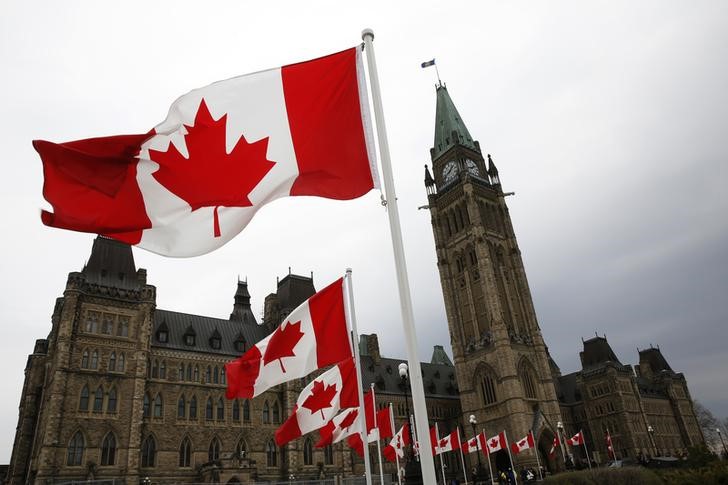By Ketki Saxena
Investing.com – The last week was a busy one in Canadian Economics with a speech by the Bank of Canada governor and deputy governor and a full docket of economic data including national home prices, inflationary indices, and manufacturing and wholesale sales.
Here’s a recap of what you may have missed this week in Canadian Economics
- Tiff Macklem Testimony: Bank of Canada Governor Tiff Macklem testified before the Senate standing committee on finance, reiterating much of the rhetoric from the BoC’s Jan rate hike, and first ever Summary of Deliberations. Mr. Macklem reiterated that the Canadian economy remained “clearly in excess demand”, that the BoC has hit a “conditional pause” for now, but that it is prepared to hike further "If evidence begins to accumulate to show that inflation is not declining in line with forecast”. Mr. Mackelm also reiterated his expectation for “CPI inflation to fall to around 3% in the middle of this year and reach the 2% target in 2024."
- Paul Beaudry Speech: Bank of Canada deputy governor Paul Beaudry, at a speech in Alberta, explicated the relationship between inflation economic inefficiency, and business competition. The deputy governor noted that when inflation is around the two per cent target, firms adjust prices less frequently and must stay competitive with each other to attract customers. When inflation is high, however, it’s easier for businesses to pass on larger price increases to consumers. “If people don’t believe they can find a better price by shopping around, firms have more leeway to increase markups, leading to distortions that make the economy less efficient and consumers worse off,” Beaudry noted.
- Canadian Housing Prices Slide: According to the Canadian Real Estate Association, national home sales declined 3% month-over-month in January. Monthly activity came in 37.1% below January 2022, making it the worst January since 2009 in the immediate aftermath of the Financial Crisis. The Canadian national home price average meanwhile declined 18.3% year over year, in line with economist expectations for a 15-25% peak to trough decline in Canadian home prices. The actual national average home price was $612,204 in January. Canadian housing prices activity continues to decline as rising-interest rates sent mortgage rates soaring as the prime lending rate rose from just under 2.5% early last year, to its current level of 6.7%.
- Underlying Inflationary Pressures: Two releases from StatsCan showed underlying inflationary pressures in raw materials and out of factory prices - a potential precursor for next week’s CPI data. Statistics Canada reported that the Industrial Product Price Index increased 0.4% month over month in January, following two consecutive months of declines, and rose 5.4% year over year. The increase was driven in part by an uptick in prices for energy and petroleum products, which rose 0.4% month over month, following a 10.2% decline in December. The Raw Materials Price Index meanwhile, edged down 0.1% month over month, a third consecutive monthly decline, but remained 1.2% higher year over year. The moderation in prices was driven by crude energy products, which fell 1.4% on a monthly basis, mainly on lower prices for natural gas, which fell -21.6%.
- Monthly declines in Manufacturing, Wholesale Sales: Statistics Canada reported manufacturing sales fell 1.5% in December, mainly on lower sales of petroleum and coal products, wood products and food industries. On an annual basis, total manufacturing sales increased 17.9% to $850.9 billion in 2022, with sales increasing in 20 of 21 industries. Statistics Canada also reported that wholesale sales fell 0.8% to $82.2 billion in December. Declines in the machinery, equipment and supplies subsector and the miscellaneous goods subsector led to the losses. On an annual basis however Canadian wholesale grew 11.8% to $973.1 billion in 2022. Sales increased in six months of the year and increased on a quarterly basis as well throughout the year.
